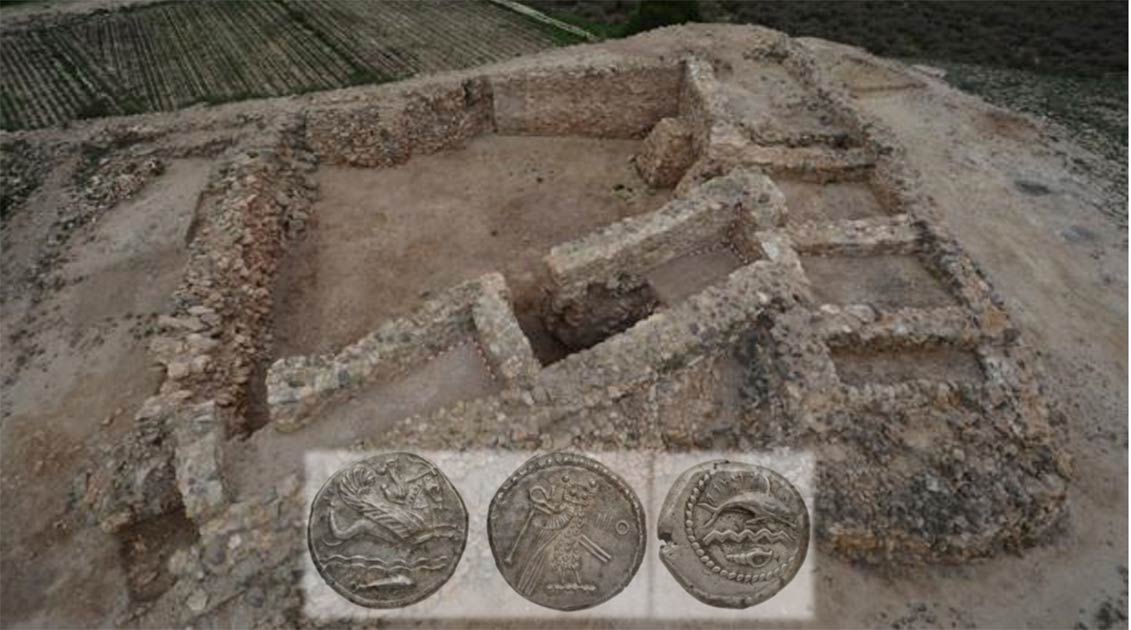9th Century BC Moat to Protect Phoenician Settlement Excavated in Spain
Archaeologists working at a in the Alicante province of Spain have just discovered a large moat. This emphasizes the defensive actions taken by the settlers against the hostility they faced when they lived on the Iberian coast between the 8th and 9th century BC.
The moat is one of the defensive features of the Phoenician settlement at the archaeological site of Cabezo Pequeño del Estaño (also known as Cabeço de l’Estany), located in the coastal town of Guardamar del Segura. A University of Alicante press release reports that the moat is three meters (9.84 ft.) deep and over eight meters (26.25 ft.) wide at the top. It was dug by hand and the chisel marks made by the ancient workers can still be seen in the rocky substratum even today.
Protective Features of the Phoenician Settlement
The archaeologists received clues to the moat’s existence by examining aerial photography, which suggested it was located on a hill parallel to the settlement’s walls. The moat itself was covered in an excess of soil, not only due to the passage of time, but possibly also because of ancient earthquakes and illegal quarrying at the site in 1988. Nonetheless, one of the archaeologists and site directors, Fernando Prados of the Instituto Universitario de Investigación en Arqueología y Patrimonio Histórico (INAPH) of the University of Alicante, has called the moat “enormous and intact.”

Photo of the recently discovered Phoenician moat. (Universidad de Alicante)
Archaeologists said that along with the one in the Castle of Doña Blanca, in Cadiz, “the latest discovery is the only Phoenician moat still preserved in the western Mediterranean area from its time,” according to RUVID. The University of Alicante press release also states that “As with the spectacular wall of this site, the closest known parallels to the Phoenician moat are found in the Middle East, in Phoenician cities like Tell Dor or Beirut (now the capital of Lebanon).”
- The Phoenicians: Mysterious Merchant Mariners Whose Inventions Impacted the World Forever
- 2,500-Year-Old Phoenician DNA Linked to Rare and Ancient European Ancestry
- An Ancient Mine with Links to the Search for Life on Mars: Rio Tinto Reopens
Signs of an Important Phoenician Colonial Site
This is just the latest discovery suggesting the importance of the settlement at Cabezo Pequeño del Estaño in leading Phoenician colonial policy between the 9th and 8th centuries BC. The project website shows that the INAH has been excavating the site in collaboration with the Archaeological Museum of Guardamar del Segura since 2013.
The excavators have made some remarkable finds over the years, resulting in the conclusion that this was a major site for metallurgy and trade. The researchers also see the defensive wall and moat as clear signs that the Phoenician inhabitants of the settlement on the mouth of the river confronted attack from locals.

Part of the defensive wall at the Phoenician settlement. (Ripoll531/CC BY SA 4.0)
The project website states that the team has focused on three main areas of the well-planned site: the citadel, the western wall’s vaulted chamber, and the housing area. The oldest sections of the Phoenician settlement have been dated to around 780 BC. ABC reported in 2019 that the Phoenicians weren’t used to the seismic activity they faced in the area, and unwittingly they built tall walls that they had to repeatedly repair. It seems the Phoenician settlement was abandoned around 700 BC, possibly following a particularly bad earthquake.

Image showing the wall (muralla), moat (foso), and citadel (ciudadela) at Cabezo Pequeño del Estaño. (Universidad de Alicante)
A Silversmith’s Heaven
Some of the most interesting finds made during previous excavations were in the large, circular metallurgical workshop, complete with a workbench, furnaces, forges, smelting tools and galena – a mineral from which the Phoenician metalworkers extracted silver.
Fernando Prados said that the metallurgy workshop was in use between approximately 700 and 650 BC, “a time that corresponds to the second phase of life of this town founded around 780 BC and partially destroyed by an earthquake that occurred around 730.” The researchers discovered the age of the workshop by using radiocarbon dating on seeds found around that location.

Pottery discovered during previous excavations at the ancient Phoenician settlement at Cabezo Pequeño del Estaño. (Universidad de Alicante)
The silver crafting workshop also provided clues on the connections which the Phoenicians had with other areas because the minerals used in their work “arrived by boat from the mountains of Almeria and Murcia,” according to Prado. The researchers found that the silver ingots produced at Cabezo Pequeño del Estaño were exported all over the Mediterranean to the Middle East, providing them with more information on the scale of the Phoenician commercial circuit in the Hispanic southeast at the time.
Top Image: Aerial view of the Phoenician settlement at Cabezo Pequeño del Estaño in Alicante, Spain. Inset; Examples of Phoenician silver found at other sites. Source: Fernando Prados/Public Domain/Public Domain



















